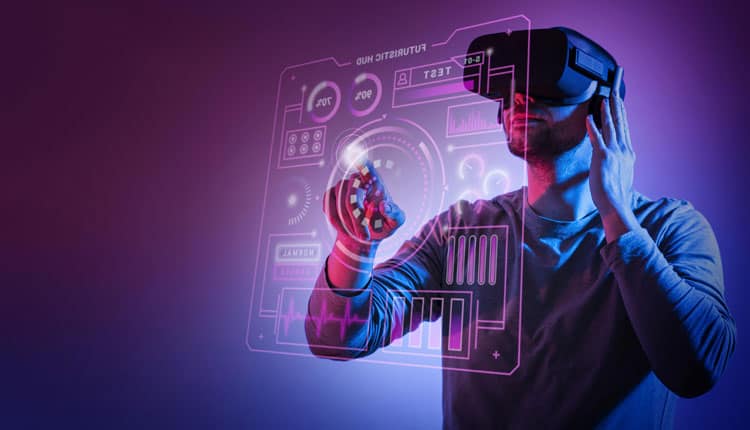The Role of Avatars in Virtual Events: Enhancing Engagement and Immersive Experiences in the Metaverse
By Sriram PH, CEO & Co-Founder, DaveAI
In the ever-evolving landscape of digital interaction, the metaverse has emerged as a frontier for virtual connectivity. At the heart of this immersive universe are avatars, digital personas that represent users in a three-dimensional world. Here we dive into the pivotal role avatars play in virtual events, exploring how they enhance engagement and create immersive experiences that transcend the boundaries of physical reality.
The Dawn of Digital Personification and Customisation
Avatars play a crucial role in enhancing engagement and creating immersive experiences in virtual events within the metaverse. They provide a more personalised and interactive experience for users, allowing them to connect with each other on a deeper level than traditional online platforms. Avatars can be customised to represent users’ unique identities, improving the sense of community and social interaction within the virtual world. They also enable users to manage their own learning experiences at their own pace and tailor the experience to their individual needs and preferences, leading to improved engagement and motivation levels.
Emotional Connectivity Through Avatars
Avatars serve as conduits for emotional expression. Facial expressions, gestures, and movements can be mirrored in the digital realm, allowing for a spectrum of emotions to be conveyed without a word spoken. This non-verbal communication enriches the social fabric of virtual events, fostering a sense of empathy and understanding among participants.
In virtual events, avatars can simulate real-life interactions, making participants feel as though they are physically present. They can also exchange information in different formats and even show emotions through animations, leading to more natural and meaningful exchanges. AI-driven avatars can understand context, respond to queries, and simulate emotions, further enhancing the experience and outcomes of virtual events. AI provides valuable analytics and insights into attendee behaviour, engagement levels, and overall sentiment, which can be used to improve future events and tailor content to participant preferences.
The Metaverse: A Stage for Virtual Events
Virtual events in the metaverse offer unparalleled opportunities for networking, learning, and entertainment. Avatars are central to this experience, providing a sense of place and continuity that anchors users in the virtual environment.
The metaverse offers a versatile platform for businesses to interact with their customers and employees, providing a space for learning, collaboration, and training. It allows users to explore concepts and ideas in a more immersive and engaging way, leading to a deeper understanding of the subject matter. The metaverse’s immersive and interactive environment can also help businesses build closer relationships with their customers by offering a space for them to connect and engage in a more personalised manner.
Networking in the Third Dimension
The metaverse removes geographical barriers, enabling avatars to interact in ways that mimic real-life networking. Handshakes, exchange of virtual business cards, and private conversations are all possible, making virtual events a hotbed for professional connections.
Role of Inclusivity and Representation as Considerations
Inclusivity and representation are crucial considerations in the design and implementation of avatars in virtual events. Avatars should reflect the diverse range of users, including their gender, race, age, and physical abilities. This not only fosters a more inclusive environment but also helps create a more authentic and engaging experience for participants.
Inclusive design principles, such as those outlined in the Web Content Accessibility Guidelines (WCAG), should be applied to avatar design. These principles include using subtle colours, logical layouts, providing transcriptions for videos, and ensuring good colour contrast between text and background, among others. These guidelines help ensure that avatars are accessible to users with different abilities and needs, enhancing the overall user experience.
Additionally, avatar design should consider the cultural and social contexts of the users. This includes using illustrative language that reflects the diversity of users and their cultural lenses. For example, an avatar that reflects an employee’s origins or beliefs can help them feel equally considered and valued, promoting a more inclusive and diverse environment.
Examples of Avatars used in Virtual Events
There are several examples of avatars used in virtual events, each with its unique purpose and application. Some of the most common examples include:
1. Virtual Team Building Activities: Avatars can be used to create interactive virtual meetings that feel real and promote closeness among participants.
2. Virtual Conferences and Expos: Avatars can represent company staff at virtual conferences and expos, allowing attendees to contact them and network in real-time. This creates a more engaging and interactive experience, simulating real-life interactions.
3. Virtual Meetings and Training: Avatars can be used to enhance online training sessions, providing a more personalised and interactive learning experience. This can be particularly useful for remote workers who need to collaborate and learn in a virtual environment.
4. Virtual Escape Rooms: Avatars can be integrated into virtual escape rooms, creating a fully immersive experience where participants work together to solve puzzles and challenges in a virtual environment.
5. Augmented Reality (AR) Avatars: AR avatars can be used to provide training and guidance in using equipment and machinery, as well as in corporate training apps. They can also be used in fashion and beauty apps to allow users to virtually try on clothes, makeup, and accessories before making a purchase.
6. Metaverse Avatars: Metaverse avatars can be used to increase brand awareness and drive sales, showcase products and services, offer an interactive experience in the virtual world, and provide customisation options for users.
Conclusion
Avatars are the beating heart of virtual events in the metaverse. They are the bridge between the physical and digital worlds, offering a medium for expression, connection, and exploration. As technology advances, the potential for avatars to enhance engagement and immersive experiences is boundless. The metaverse awaits, and with it, the next chapter in the evolution of virtual interaction.



